Worst To First: How Growth-Friendly Is Your State?
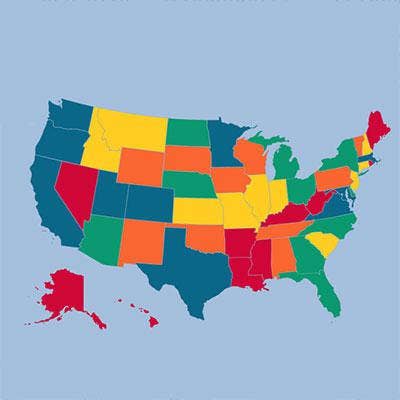
The Best And The Worst States For Growing A Solution Provider Business
For many solution providers, if not most, the goal is growth. And while the success or failure of a solution provider certainly hinges on the capabilities of the company's managers, their strategy and the company's product and service offerings, there are also a lot of external factors at work. How abundant are the business opportunities in the geographies the solution provider is competing? Is there a large pool of experienced workers from which the company can hire the IT talent it needs? And will taxes and regulations hinder growth?
The following ranks all 50 states, from the worst (No. 50) to the best (No. 1) for growing a solution provider business. It's based on a CRN Research analysis of a wide range of data, including the education and experience level of a state's workforce, labor and business costs, and tax and regulatory burden. States are also ranked for innovation and growth potential and business opportunities. We've also cross-referenced the findings with CRN's 2015 Solution Provider 500, listing how many of the biggest solution providers call each state home.
Also be sure to look at our interactive map for a detailed analysis of the business climate in all 50 states.

No. 50: West Virginia (No. 46 in 2014)
Solution Provider 500: 0
West Virginia, which scored the lowest among all 50 states in our analysis, can be a tough place to make a living as a solution provider.
The state was No. 50 in innovation and growth: Despite robust 5.1 percent real gross state product growth in 2014, West Virginia scores low in other criteria such as entrepreneurial activity, issued patents and the share of the private sector employed as scientists and engineers.
West Virginia ranked No. 45 in business opportunity, which covers economic climate, job growth and the number of businesses in the state -- including fast-growing businesses -- that provide potential customers for a solution provider.
And the Mountain State was a poor No. 47 in our analysis of available educated, experienced workers. (A 2014 report from The Information Technology & Innovation Foundation gave the state poor grades for workforce education.) The state did score well (ranked No. 7) for its low labor costs. West Virginia's June unemployment rate, 7.4 percent, was the nation's highest.

No. 49: Mississippi (No. 49 in 2014)
Solution Provider 500: 4
Mississippi, No. 50 among all the states in the education and experience of its workforce, is a challenging state to find the IT talent needed by a growing solution provider.
The Magnolia State also ranks poorly (No. 48) in innovation and growth prospects -- it's last in the share of the private sector employed as scientists and engineers, last in the number of awarded patents, and last in information technology jobs (employment in IT occupations in non-IT industries as a share of total private-sector jobs). The state also ranks No. 48 in business opportunity given the low scores for its overall economic climate, not surprising given the 1.2 percent decline in 2014 real GDP.
Mississippi does rank No. 2 among the states for its low labor costs, relatively low unemployment insurance taxes and other expenses. But it's a surprisingly poor No. 40 in overall taxes and regulations: The state has a relatively low corporate income tax (5.0 percent), but high property taxes and a combined state and average local sales tax rate of 7.07 percent.
At $35,521, Mississippi has the lowest median household income in the country.

No. 48: Hawaii (No. 45 in 2014)
Solution Provider 500: 0
Paradise is a very expensive place to do business.
Hawaii has generally come in near the bottom of our analysis and this year it slipped three places from last year. The state ranked No. 49 on overall labor and employment costs and was dead last in the "labor costs -- cost of doing business" ranking in the CNBC America's Top States for Business 2015.
That same study ranked Hawaii's education system No. 45 among the 50 states. Still, the Aloha State managed a respectable No. 23 in our analysis for the overall experience and education of its workforce -- probably because it's No. 10 in attracting workers from elsewhere in the country.
Hawaii ranks No. 25 in overall taxes and regulations because its relatively low taxes (a 6.4 percent corporate income tax rate) balances out the fact that Forbes Best States for Business judged its regulatory environment to be among the most onerous in the nation.
Real GDP growth in 2014 was an anemic 0.8 percent.

No. 47: Arkansas (No. 47 in 2014)
Solution Provider 500: 0
Arkansas ranks No. 18 in overall labor costs and related expenses, but it loses points for its relatively high unemployment insurance burden (ranked No. 44). Its 2014 real GDP growth was 0.8 percent.
The Natural State is ranked No. 45 for the education and experience of its workforce and it's No. 50 among all states for attracting people from elsewhere within the country. It ranks very low (No. 46) in innovation and growth, and in business opportunity (No. 39).
And Arkansas ranks a surprisingly poor No. 42 in taxes and regulations: It's corporate income tax rate is 6.5 percent and combined state and average local sales tax rate is 9.26 percent -- among the highest in the country.

No. 46: Maine (No. 48 in 2014)
Solution Provider 500: 1
Maine boasts having a relatively well-educated, experienced workforce (No. 18 in our analysis).
But the Pine Tree State's overall ranking in our analysis suffers from low grades in innovation and growth potential (No. 45) and business opportunity (No. 46) -- the latter for a poor economic climate (No. 48, according to Forbes Best States for Business) and job growth (also No. 48, according to Stateline – Moody's Analytics Job Growth 2014 report). Maine's real GDP grew a paltry 0.2 percent in 2014.
Maine's ranking for overall taxes and regulatory environment (No. 44) is weighed down by its 8.93 percent corporate income tax rate, among the 10 highest in the U.S., and high property taxes. On the plus side, its 5.5 percent combined state and average local sales tax rate is among the lowest.

No. 45: Rhode Island (No. 50 in 2014)
Solution Provider 500: 3
Rhode Island, which was dead last in our 2014 ranking, has moved up five spots. But in our analysis the Ocean State still has a long way to go in offering a solid business environment for growing solution providers.
The state is ranked No. 50 in taxes and regulatory environment. Its corporate income tax and combined state and local average sales taxes, both 7.0 percent, are on the mid to high side.
Despite its location in the busy New York-Boston corridor, Rhode Island's rankings for both business opportunity and innovation/growth are stuck at No. 42. The CNBC America's Top States for Business 2015 study ranks Rhode Island a poor No. 45 for economic expansion and development potential.
On the plus side, Rhode Island did rank No. 13 for its experienced, educated workforce. And its 1.2 percent real GP growth in 2014 put it around the median among all 50 states.

No. 44: Wyoming (No. 38 in 2014)
Solution Provider 500: 0
Wyoming is another state whose taxes and regulatory environment ranking (No. 27) benefits from the lack of a corporate income tax and a moderate 5.47 percent combined state and average local sales tax rate. But its No. 41 regulatory ranking by Forbes Best States for Business is surprisingly poor.
Despite Wyoming's healthy real GDP growth of 5.1 percent in 2014, poor scores for other criteria such as the sparse number of businesses and poor job growth put the state dead last in business opportunity.
The Equality State's No. 49 rank for information technology jobs (employment in IT jobs in non-IT industries as a share of total private-sector employees) pulls down the overall innovation and growth ranking (No. 44).

No. 43: Alaska (No. 44 in 2014)
Solution Provider 500: 0
Alaska can be an expensive place to do business with limited opportunities across its vast expanse, according to our analysis.
The Last Frontier State ranks No. 44 in overall labor and employment expenses (including high energy and electricity costs). But on the plus side, it does rank fairly high (No. 15) for the experience and education level of its workforce.
Our analysis ranks Alaska No. 49 for business opportunity: Its bottom ranking (No. 50) for the number of businesses in the state means that building a customer base can be a challenge. The CNBC America's Top States for Business 2015 ranks Alaska's economy at No. 49, not surprising given that the state's real GDP declined 1.3 percent in 2014 -- the worst economic performance of any state.
Alaska's 9.4 percent corporate income tax is among the nation's five highest.

No. 42: Nevada (No. 41 in 2014)
Solution Provider 500: 0
Nevada isn't a great place to find talented workers. The state ranked a poor No. 48 in our analysis for the level of education and experience of its workforce. That included a No. 50 rank for the state's education system by CNBC America's Top States for Business 2015, and a No. 50 rank in a 2014 report from The Information Technology & Innovation Foundation for the low percentage of managerial, professional and technical jobs as a share of the total private-sector workforce.
The Silver State is ranked No. 24 for its tax and regulatory burden, largely due to its lack of a corporate income tax and low property taxes. (Its 7.94 percent combined state and average local sales tax rate is on the high side among the 50 states.)
The Great Recession hit Nevada hard and the Forbes Best States for Business report ranks the state last for economic climate. Its real GDP grew 1.0 percent in 2014.

No. 41: Tennessee (No. 35 in 2014)
Solution Provider 500: 6
Tennessee ranks No. 23 for its moderate labor costs. But that's offset by its low ranking (No. 43) for workforce education and experience.
The Volunteer State is ranked No. 7 for its business-friendly regulatory environment and the state's corporate income tax is a moderate 6.5 percent. But high property taxes and the highest combined state and average local sales tax rate (9.45 percent) in the country, according to the Tax Foundation, reduce the overall tax and regulatory ranking to a mediocre No. 33.
Our analysis ranks Tennessee at No. 31 for innovation and growth and for business opportunity -- the latter hit by a poor (No. 43) job growth rank by Stateline – Moody's Analytics Job Growth 2014.

No. 40: Kentucky (No. 42 in 2014)
Solution Provider 500: 4
Kentucky is ranked No. 2 by CNBC America's Top States for Business 2015 for its low labor costs and cost-of-doing-business expenses, boosting the state's ranking in our overall labor/employment costs to No. 11.
The Bluegrass State is No. 46 in workforce education and experience – Kentucky ranks No. 49 in its ability to attract workers from elsewhere in the U.S. On the plus side, it's No. 20 in taxes and regulations with a moderate 6.0 percent corporate income tax and 6.0 percent combined state and average local sales tax rate.
Kentucky's rankings for innovation and growth and for business opportunity, No. 39 and No. 40, respectively, are nothing to brag about. Its 2014 real GDP growth was 1.0 percent.
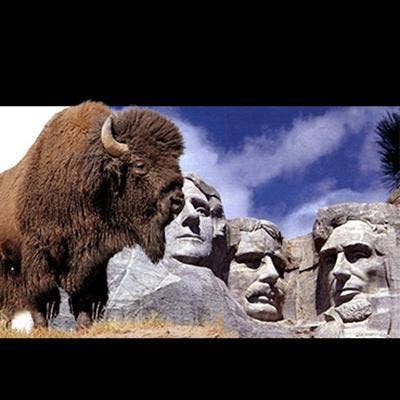
No. 39: South Dakota (No. 34 in 2014)
Solution Provider 500: 1
South Dakota offers a comparatively business-friendly environment of taxes and regulations, ranking No. 13 overall in our analysis. The state has no corporate income tax, no personal income tax, and its 5.83 percent combined state and average local sales tax rate (5.83 percent) is relatively low. And it ranked No. 12 in overall labor costs and related expenses.
The low ranking for the Mount Rushmore State's educated, experienced workforce (No. 37) is nothing to write home about. Only West Virginia ranked lower than South Dakota in innovation and growth.
South Dakota's 0.6 percent real GDP growth in 2014 put it in the bottom 10 among the 50 states.

No. 38: Louisiana (No. 43 in 2014)
Solution Provider 500: 3
Louisiana is ranked No. 5 for its low labor expenses, including low unemployment insurance costs.
But that's about the only area where the Pelican State scores well. It's No. 49 in the experience and education level of its workforce with only Mississippi below it. Louisiana has a relatively high corporate income tax rate (8.0 percent) and one of the highest combined state and average local sales tax rates (8.91 percent) in the country, ranking the state No. 22 overall in taxes and regulations.
Louisiana did record fairly healthy real GDP growth of 1.9 percent in 2014.

No. 37: New Mexico (No. 40 in 2014)
Solution Provider 500: 1
The Tax Foundation ranks New Mexico as having the lowest property taxes in the country. But that's balanced out by the state's moderately high combined state and average local sales tax rates (7.35 percent) and middle-of-the-pack corporate income tax rate (6.9 percent), putting it at No. 15 for its overall tax and regulatory burden.
New Mexico, The Land of Enchantment state, ranks No. 10 for its relatively low labor and employment costs. Its real GDP grew 1.0 percent in 2014.
The state ranks a poor No. 43 in business opportunity, despite being ranked No. 1 in a 2014 report from The Information Technology & Innovation Foundation in "manufacturing value add" for the concentration of electronics manufacturing in the Albuquerque and Santa Fe areas.

No. 36: Kansas (No. 30 in 2014)
Solution Provider 500: 8
Kansas ranks a respectable No. 19 for the education and experience of its workforce while its overall labor and business costs are relatively high (ranked No. 36).
The Sunflower State is ranked No. 30 in taxes and regulations: Its corporate income tax is a moderate 7.0 percent, but its combined state and average local sales tax rate is a high 8.2 percent.
Kansas' rankings for growth and innovation (No. 34) and business opportunity (No. 37) aren't great. Its 2014 real GDP growth was 1.8 percent.

No. 35: Vermont (No. 31 in 2014)
Solution Provider 500: 0
Despite its rural nature, Vermont ranks No. 1 among all states for its highly educated, experienced workforce. Part of that is due to its No. 3 rank in education (according to CNBC America's Top States for Business 2015). It's also due to the state's ability to attract educated workers from within the U.S. (No. 1) and from other countries (No. 6).
But the Green Mountain State ranks near the bottom (No. 47) in taxes and regulations due to its high property taxes and high 8.5 percent corporate income tax rate.
Vermont recorded low real GDP growth (0.6 percent) in 2014 and Forbes Best States for Business ranked it No. 47 for growth prospects. In a seeming contradiction, however, the 2014 report from The Information Technology & Innovation Foundation ranked the state No. 1 for entrepreneurial activity. Maybe in Vermont the idea is to stay small?

No. 34: Alabama (No. 39 in 2014)
Solution Provider 500: 4
Alabama has mediocre grades across many of the criteria in our analysis including No. 27 for labor costs and expenses, and No. 34 for the education and experience level of its workforce.
The Yellowhammer State does rank high (No. 8) for its business-friendly tax and regulatory environment. It's in the top 10 for low property taxes and its corporate income tax rate is a middling 6.5 percent. (But it does have a high combined state and average local sales tax of 8.91 percent.)
The state ranks No. 32 for innovation and growth -- its 2014 real GDP growth was 0.7 percent -- and No. 41 for business opportunity.

No. 33: Oklahoma (No. 32 in 2014)
Solution Provider 500: 4
Oklahoma ranks No. 4 in overall labor and employment costs. The state has a relatively low corporate income tax rate (6.0 percent) and low property taxes, but a high combined state and average local sales tax rate (8.77 percent), giving the state an overall favorable No. 5 ranking in taxes and regulatory environment.
The Sooner State, however, ranks pretty low (No. 44) for the education and experience level of its available workforce.
The state's growth and innovation rank (No. 43) is low despite its bullish 2.8 percent real GDP growth in 2014.

No. 32: Montana (No. 27 in 2014)
Solution Provider 500: 0
Like Vermont, Montana seems to have lots of entrepreneurial activity -- the 2014 report from The Information Technology & Innovation Foundation ranked the Treasure State No. 2 in that area. But other scores, such as for information technology jobs (No. 46), bring down Montana's innovation and growth and business opportunity rankings (No. 38 for both).
Montana scores well for low labor costs (No. 14), but in the middle (No. 29) for the education and experience levels of its workforce. It's a solid No. 18 in taxes and regulatory environment: The state has no sales taxes, low property taxes and a 6.75 percent corporate income tax rate.
Montana's 2014 real GDP growth rate was 1.8 percent.

No. 31: Wisconsin (No. 37 in 2014)
Solution Provider 500: 10
While Wisconsin ranks No. 25 in workforce education and experience, it's No. 41 in labor and employment costs. The Badger State is No. 32 in taxes and regulatory environment, including a fairly high 7.9 percent corporate income tax and low 5.43 percent combined state and average local sales tax.
The state's real GDP grew 1.0 percent in 2014. The state ranked No. 28 in innovation and growth and No. 26 in business opportunity. The latter included a solid No. 14 rank for economic expansion and development (by CNBC America's Top States for Business 2015 report), but a low No. 43 for the number of fast-growing companies in the state (according to the Information Technology and Innovation Foundation report), the kind of businesses that help a solution provider expand its customer base.

No. 30: Idaho (No. 22 in 2014)
Solution Provider 500: 1
Idaho, like other upper Midwest and Northwestern states, fell in this year's rankings.
While Idaho boasts low labor costs, the state's high unemployment insurance costs and energy expenses result in an overall No. 30 labor and employment cost ranking. And it ranks pretty low (No. 39) in worker education and experience.
The Gem State does have low property taxes, moderate corporate income taxes (7.4 percent) and fairly low (6.01 percent) sales taxes, giving Idaho an overall No. 19 tax and regulatory environment ranking.
Idaho's healthy 2.7 percent real GDP growth in 2014 helped boost its innovation and growth ranking to No. 22.

No. 29: Iowa (No. 36 in 2014)
Solution Provider 500: 2
Iowa moved up an impressive seven spots in this year's ranking.
The Hawkeye State has the lowest overall labor and related expenses among all 50 states, fueled by the low unemployment insurance burden placed on businesses.
But the flip side is that the state ranks No. 35 for overall taxes and regulations: Its 12.0 percent corporate income tax is the highest in the nation. (Its property taxes are also fairly high while the combined state and average local sales tax is a middle-of-the-road 6.78 percent.)
Iowa ranks No. 26 for the overall education and experience of its workforce. Iowa's innovation and growth ranking is a poor No. 41 -- the state's real GDP growth last year was only 0.4 percent -- and its No. 30 business opportunity ranking is only moderately better.
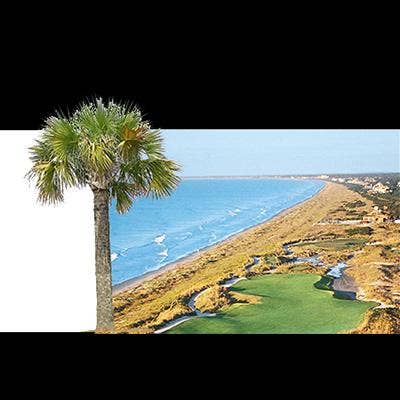
No. 28: South Carolina (No. 29 in 2014)
Solution Provider 500: 3
South Carolina may be one of the most business-friendly states in the nation. It's ranked No. 8 for low labor and related costs and No. 12 for taxes and regulatory environment: Its corporate income tax is a low 5.0 percent while its combined state and average local sales tax is 7.13 percent. And the state's 2014 real GDP growth was a healthy 2.2 percent
The best the Palmetto State can do in the education and experience of its workforce is No. 38, however, with low scores for its education system and a low (No. 42) rank for the number of managers, professionals and technicians as a percentage of the total private workforce.
One significant caveat in the quality-of-life department: South Carolina had the worst (No. 50) crime rankings among the states, according to the Crime in the United States report issued by the FBI in November 2014.

No. 27: Indiana (No. 25 in 2014)
Solution Provider 500: 3
The Hoosier State has a lot going for it. It's No. 3 for its low overall labor and related employment costs. And it's No. 16 for its moderate taxes, including a 7.0 percent corporate income tax and a 7.0 combined state and average local sales tax.
But Indiana ranks poorly (No. 42) for the education and experience level of its workforce. Its No. 36 ranking for innovation and growth is low -- its 2014 real GDP growth was 0.4 percent, putting it among the bottom 10 states -- while the state's ranking for business opportunity is a middling No. 22.

No. 26: Nebraska (No. 20 in 2014)
Solution Provider 500: 2
Nebraska ranks No. 6 for its competitive labor costs and associated business expenses and No. 24 for the education and experience of its workforce.
The Cornhusker State is in the middle (No. 27) when it comes to taxes and the regulatory burden on businesses. Its 7.81 percent corporate income tax rate is a bit above average while its combined state and average local sales tax rate, 6.8 percent, is around the median of all states.
Suffering low scores for entrepreneurial activity (ranked No. 42) and growth prospects (No. 46, according to Forbes Best States for Business 2015), Nebraska ranks only No. 40 in growth and innovation. But it does rank No. 23 for business opportunity, thanks to the same Forbes' report ranking Nebraska No. 2 for economic climate, despite its low 0.7 percent real GDP growth in 2014.

No. 25: Connecticut (No. 24 in 2014)
Solution Provider 500: 9
Connecticut can be an expensive state in which to run a business. The Constitution State ranks dead last, No. 50, for its high labor and related business costs. And it's a high-tax state, ranked No. 48 for its regulations and taxes, the latter including some of the highest property taxes and a 9.0 percent corporate income tax.
On the plus side, Connecticut's workforce is ranked No. 6 for its high levels of experience and education. It's No. 14 for innovation and growth potential and No. 15 for business opportunity -- the latter despite a No. 44 ranking in economic climate by the Forbes Best States for Business report.
Connecticut's real GDP growth in 2014 was 0.6 percent, putting it among the bottom 10 states.

No. 24: Pennsylvania (No. 33 in 2014)
Solution Provider 500: 16
Pennsylvania is another state that's moved up an impressive number of spots in our analysis this year.
At No. 37 for overall labor and employment costs, Pennsylvania can be an expensive place to hire employees. The Keystone State ranks No. 28 for workforce education and experience.
The state's tax and regulatory ranking (No. 39) takes a hit from its 9.99 percent corporate income tax -- second only to Iowa. It ranks No. 25 for innovation and growth -- including a surprisingly low No. 49 for entrepreneurial activity. But the large number of businesses in the state, many of them fast-growing, boost Pennsylvania's business opportunity ranking to No. 17.

No. 23: Illinois (No. 23 in 2014)
Solution Provider 500: 31
Illinois ranks No. 12 in the educated, experienced workforce is offers for solution providers.
But the Prairie State has a lot working against it. With a fairly high corporate income tax (7.75 percent), high combined state and average local sales tax (8.19 percent) and high property taxes, Illinois ranks No. 46 with the heavy tax and regulatory burden it places on businesses. And it's ranked No. 48 for its high labor, unemployment insurance and related costs.
Illinois ranks a respectable No. 19 in innovation and growth, despite its No. 45 ranking in entrepreneurial activity, and No. 19 in business opportunity despite its No. 49 rank in job growth. Illinois recorded real GDP growth of 1.2 percent in 2014.

No. 22: New Hampshire (No. 28 in 2014)
Solution Provider 500: 6
New Hampshire is sometimes portrayed as the most-business friendly state in the Northeast, largely on the basis that it has no sales tax. But its 8.5 percent corporate income tax, the same as neighboring Vermont and half a point below Massachusetts to the south, puts it in the top dozen or so among all states. And its property taxes are high. That all adds up to a surprisingly poor No. 38 ranking in overall taxes and regulations.
On the plus side, the Granite State ranks No. 5 for its highly educated and experienced workforce. The state also has the second highest median household income ($73,397), according to the U.S. Census Bureau, behind only Maryland.
New Hampshire recorded fairly robust real GDP growth of 2.3 percent in 2014.

No. 21: Missouri (No. 21 in 2014)
Solution Provider 500: 8
Missouri is No. 1 for its overall business-friendly tax and regulations -- the state scored a No. 5 ranking for its regulatory environment, according to the Forbes Best States for Business report. Along with low property taxes, Missouri has a fairly low corporate income tax (6.25 percent) and moderate combined state and average local sales taxes (7.81 percent).
The Show Me State is ranked No. 21 for its labor and related business expenses and No. 27 for the education/experience level of its workforce.
Missouri's real GDP growth was a sluggish 0.9 percent in 2014.

No. 20: New Jersey (No. 26 in 2014)
Solution Provider 500: 26
New Jersey can be an expensive place for a solution provider to set up shop. The Garden State is ranked No. 49 for its tax and regulatory environment with high property taxes (No. 50), a 9.0 percent corporate income tax, and combined state and average local sales taxes of 6.97 percent.
It has relatively high labor costs (No. 39). But its educated, experienced workforce ranks No. 9 among all states.
New Jersey ranks No. 8 in innovation and growth -- despite poor 0.4 percent real GDP growth in 2014 that figured into the state's No. 40 economic climate ranking.

No. 19: Delaware (No. 14 in 2014)
Solution Provider 500: 0
Delaware ranks a fairly impressive No. 17 for its favorable taxes and regulatory environment. But it's an interesting mix: The state has no sales tax and low property taxes. But at 8.7 percent, Delaware's corporate income tax rate is among the 10 highest in the country.
The First State ranks No. 42 for its high labor and related employment costs. On the flip side it ranks a fairly impressive No. 14 for the education and experience of its workforce.
Delaware is No. 12 in innovation and growth, a ranking that gets a boost in the No. 3 ranking the state gets for the number of issued patents and for employment in IT occupations in non-IT industries as a share of total private-sector jobs.

No. 18: North Dakota (No. 11 in 2014)
Solution Provider 500: 1
North Dakota surged up this list last year, thanks to the oil boom and the state's 6.3 percent real GDP in 2014 -- higher than any other state. But this year crashing oil prices have brought the oil boom to an end and that's reflected in the state's drop of seven spots on this year's list.
This year the Peace Garden State is ranked No. 27 for overall Business Opportunity, including a No. 4 ranking in economic climate (by Forbes Best States for Business) and No. 13 in economy state rank (CNBC America's Top States for Business 2015). But the sparsely populated state is ranked No. 46 for the number of businesses in the state -- meaning a low number of potential customers for a solution provider.
On the plus side, North Dakota ranks No. 2 in the overall tax and regulatory burden on businesses. The state's 4.53 percent corporate income tax rate is the lowest among states that have such a tax, according to the Tax Foundation.

No. 17: Minnesota (No. 10 in 2014)
Solution Provider 500: 16
Minnesota is a state of contrasts. At No. 8 the state offers an attractive pool of educated, experienced workers. But with a No. 45 ranking for labor costs and related expenses, those employees come with a pretty hefty price tag.
And at No. 42 in taxes and regulations, the North Star State is far from the most business-friendly. Its 9.8 percent corporate tax rate is behind only Iowa and Pennsylvania and the state's 7.2 percent sales tax is on the high side.
Minnesota ranks an impressive No. 5 for business opportunity -- its real GDP growth in 2014 was a solid 1.4 percent -- and it ranked No. 17 for innovation and growth, despite a surprisingly low No. 48 ranking in entrepreneurial activity.
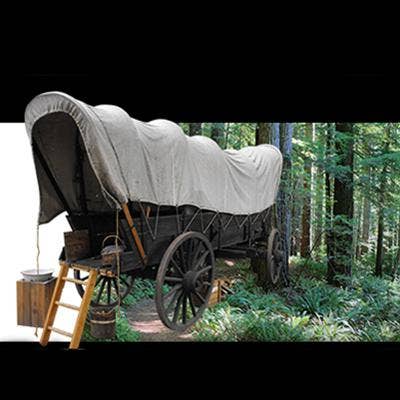
No. 16: Arizona (No. 19 in 2014)
Solution Provider 500: 13
Arizona ranks a strong No. 10 in innovation and growth, boosted by a high level of entrepreneurial activity (No. 3), a No. 5 ranking by Forbes Best States for Business for growth prospects, and a No. 10 ranking for employment in IT occupations in non-IT industries as a share of total private-sector jobs.
The Grand Canyon State is No. 17 in labor and employment costs, largely for its low unemployment insurance costs. But Arizona is only No. 36 for workforce education and experience, pulled down by its dismal No. 49 ranking for education by CNBC America's Top States for Business 2015.
The state is relatively business-friendly, ranked No. 11 for its tax and regulatory policies. Its 6.0 percent corporate income tax is fairly low, but its 8.17 percent combined state and average local sales tax rate is among the dozen highest in the country.

No. 15: Oregon (No. 9 in 2014)
Solution Provider 500: 4
Oregon is something of a middle-of-the-road state with a No. 16 ranking for workforce education and experience and a No. 26 ranking for the labor costs associated with hiring those workers.
The Beaver State is No. 21 in taxes and regulations: Oregon has no sales tax, a slightly above-average corporate income tax (7.6 percent) and a fairly poor ranking (No. 39) for regulatory environment.
Oregon is No. 13 in business opportunities and No. 20 in innovation and growth -- it had robust real GDP growth of 3.6 percent in 2014.
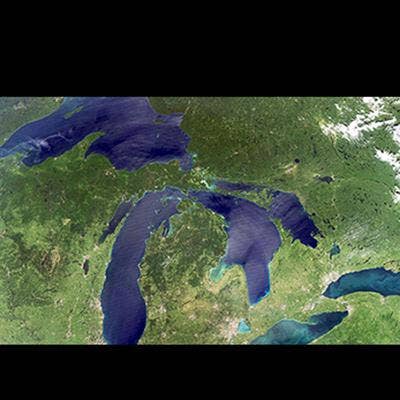
No. 14: Michigan (No. 16 in 2014)
Solution Provider 500: 15
While some states have significant contrasts in what they have to offer solution providers (low taxes and labor costs combined with low worker education, for example), Michigan runs up pretty consistent scores that are generally a little better than average.
The Great Lakes State is ranked No. 22 for the education and experience level of its workforce, for example, while its overall labor costs are ranked at No. 29. And it's No. 23 in taxes and regulations: The state's 6.0 percent corporate income tax and 6.0 combined state and average local sales tax are both on the low side.
Michigan ranks No. 24 in business opportunity. Innovation and growth, ranked a respectable No. 18, is a bit higher than the state's other scores, getting a bit of a boost from the state's 1.9 percent real GDP growth in 2014.

No. 13: Ohio (No. 18 in 2014)
Solution Provider 500: 9
Ohio may be a Midwest industrial state, but it shares some of the same low-tax, limited regulatory policies as states generally considered to be more business-friendly.
The Buckeye State, for example, is ranked No. 16 for its low labor and related employment costs. The state ranks No. 6 in taxes and regulations: It's an enviable No. 6 for its business-friendly regulatory environment and the state is one of six with no corporate income tax.
Ohio is No. 21 for innovation and growth, thanks to its healthy 2.1 percent real GDP growth in 2014, and the state is ranked No. 16 for business opportunity.

No. 12: Florida (No. 15 in 2014)
Solution Provider 500: 8
Florida, despite its overall No. 12 ranking, is something of a mixed bag. It's No. 35 for labor costs and related expenses and a poor No. 42 for worker education and experience.
The Sunshine State does better in the taxes and regulatory environment department, ranking No. 14 with its low 5.5 percent corporate income tax rate, low property taxes and moderate sales taxes.
Florida does have some things to offer in the innovation and growth category where it ranked No. 9 -- the state recorded 2.7 percent real GDP growth in 2014. And it ranked No. 11 in business opportunity, including scoring No. 3 in the number of businesses in the state.

No. 11: Maryland (No. 8 in 2014)
Solution Provider 500: 21
Maryland shines in the education and experience level of its available workforce where it's ranked No. 3. It's No. 2 in the number of managerial, professional and technical jobs as a share of the total workforce, No. 4 in the share of the private sector employed as scientists or engineers, and No. 5 in employment in IT occupations in non-IT industries as a share of the total private-sector workforce.
Not surprisingly, all this adds up to high rankings for growth and innovation (No. 7) and business opportunity (No. 14).
But it also means labor costs are high: The Old Line State is No. 38 for overall labor and related costs. Maryland's mean household income ($76,165) is the highest in the country.

No. 10: California (No. 5 in 2014)
Solution Provider 500: 52
California is generally seen as the center of the U.S. IT industry. And that's certainly true in some respects. It's ranked No. 1 in growth and innovation in our analysis, including No. 2 in technology and innovation (according to CNBC's America's Top States for Business), No. 4 in entrepreneurial activity and No. 4 in issued patents. (The state's 2014 real GDP growth was a robust 2.8 percent.)
And it's No. 2 in business opportunity, given the large number of businesses and fast-growing businesses in the state that offer a potential customer base. No wonder the state has more solution providers (from the CRN Solution Provider 500 list) than any other.
But the Golden State is No. 46 in overall labor and employment costs. It's only No. 17 in worker education and experience (it's a big, diverse state, after all). And, perhaps not so surprisingly, it's No. 43 in taxes and regulations: Its 8.84 percent corporate income tax is among the 10 highest, as is the state's 8.44 percent combined state and average local sales tax.

No. 9: New York (No. 13 in 2014)
Solution Provider 500: 42
New York ranks No. 6 in innovation and growth and No. 12 in business opportunities (it's No. 2 in the number of businesses within the state). And it's a respectable No. 10 in workforce education and experience.
Where New York loses some of its luster is the expense of doing business there. The Empire State is No. 47 in labor costs and related expenses. And it's No. 29 in taxes and regulations, a ranking pulled down by high property taxes and high combined state and average local sales tax (8.48 percent). The state's corporate income tax is a middle-of-the-pack 7.1 percent.
New York registered a healthy 2.5 percent real GDP growth in 2014.

No. 8: North Carolina (No. 17 in 2014)
Solution Provider 500: 4
North Carolina is another state that moved up significantly in this year's analysis.
The Tar Heel State has a lot of growth potential: The CNBC America's Top States for Business report ranked North Carolina No. 1 for economic expansion and development. Our analysis ranks the state No. 9 for business opportunity and No. 15 for innovation and growth.
North Carolina is No. 31 for the education and experience of its workforce and No. 20 for its labor and related business costs. But it's No. 10 for taxes and regulations: Forbes Best States for Business ranks the state No. 2 for its business-friendly regulatory environment.

No. 7: Massachusetts (No. 6 in 2014)
Solution Provider 500: 13
Massachusetts ranks No. 4 for the education and experience of its workforce, behind only Virginia, Maryland and Vermont. The Bay State, in fact, is No. 1 in many workforce criteria, including the number of managerial, professional and technical jobs as a share of the total private-sector workforce.
The Bay State is likewise ranked No. 4 for innovation and growth, given its high scores for information technology jobs as a share of all non-IT industry private sector jobs (No. 4) and number of scientists and engineers (No. 3). And Massachusetts' business opportunity rank (No. 10) gets a boost from high grades for the number of fast-growing firms and economic climate (including 2.3 percent real GDP growth in 2014).
But Massachusetts ranks No. 40 for its high labor costs. And the state is a disappointing No. 45 for its taxes-- especially its high property taxes and moderately high 8.0 percent corporate income tax rate -- and regulatory environment.

No. 6: Georgia (No. 12 in 2014)
Solution Provider 500: 20
Georgia has a lot going for it as a place for a solution provider to set up shop and grow. The state ranks No. 8 for business opportunity, including being No. 10 and No. 11, respectively, in the number of businesses and number of fast-growing companies in the state. And CNBC America's Top States For Business ranks Georgia's economy at No. 4.
The Peach State also ranks an impressive No. 11 in innovation and growth: Its real GDP growth in 2014 was a solid 2.3 percent. Even more impressive is Georgia's No. 7 rank for taxes and regulations: Its corporate income tax (6.0 percent) and combined state and average local sales tax (6.96 percent) are about average or below.
Georgia's workforce ranks only No. 35 for its education and experience. But then it's also ranked No. 19 for its lower labor costs.

No. 5: Texas (No. 7 in 2014)
Solution Provider 500: 24
Texas has been on an economic tear in recent years: Its 5.2 percent real GDP growth last year was second only to oil boom-fueled North Dakota.
Our analysis ranked Texas No. 1 for business opportunity, largely on the Lone Star State's top scores for its booming economic climate and job growth. And should anyone dismiss the state as a place of low-skill, low-wage McJobs, our analysis ranked it No. 3 (behind only California and Washington) for innovation and growth. (Texas was ranked No. 17 for employment in IT occupations in non-IT industries as a share of total private-sector jobs.)
Still, Texas ranked only No. 40 for the education and experience of its workforce and No. 24 for its labor costs (more evidence the state is far from all low-wage workers).
And Texas ranked a somewhat surprising No. 28 in taxes and regulations. While the state boasts that it has no corporate income tax, it does have high property taxes and a combined state and average local sales tax rate (8.05 percent) that's among the dozen highest in the country.

No. 4: Utah (No. 3 in 2014)
Solution Provider 500: 1
Utah, our No. 1 state in this analysis in 2013, remains a strong candidate for growing a solution provider business. The Beehive State continues to combine a business-friendly economy with an educated workforce and opportunities for innovation and growth.
Utah ranks No. 4 for business opportunity, in our analysis, fueled by its 3.1 percent real GDP growth in 2014 (putting it in the top 10 of all states). And while it's only No. 31 in the number of companies in the state, it's ranked No. 5 for the number of fast-growing companies that make the best customers for solution providers.
The state is ranked an enviable No. 3 for its low-tax, limited-regulations business environment. It has a low 5.0 percent corporate income tax and low property taxes, while its 6.68 percent combined state and average local sales tax is about average for all 50 states.

No. 3: Virginia (No. 1 in 2014)
Solution Provider 500: 44
Virginia, last year's No. 1 state in our analysis, is still a great place for growing a solution provider business. It's ranked No. 7 for business opportunity, including being ranked No. 3 for having lots of fast-growing companies. And it's ranked No. 13 in innovation and growth potential, despite zero real GDP growth in 2014.
The Old Dominion State is No. 9 in taxes and regulations -- it's No. 1, in fact, for having the most business-friendly regulatory environment. The state's combined state and average local sales tax is a low 5.63 percent while the corporate income tax is a moderate 6.0 percent.
Virginia really shines for its highly educated and experienced workforce, ranked No. 2, and the Information Technology & Innovation Foundation ranks the state No. 1 for the number of people employed in IT occupations in non-IT industries as a share of total private-sector jobs. But those workers have a big price tag as Virginia is ranked No. 43 for its high labor costs.

No. 2: Washington (No. 4 in 2014)
Solution Provider 500: 5
Washington ranks No. 2 in innovation and growth (behind No. 1 California), not surprising since it's No. 1 in technology and innovation (CNBC America's Top States For Business 2015), No. 1 in the share of the private sector employed as scientists or engineers, No. 1 in the number of awarded patents, and No. 2 for the number of people employed in IT occupations in non-IT industries as a share of total private-sector jobs (just behind Virginia).
The Evergreen State is No. 11 for its highly educated and experienced workforce.
Washington is also very business-friendly, ranked No. 2 for its taxes and regulatory environment. That's largely based on the lack of a corporate income tax -- one of only six states without such a tax. But its combined state and average local sales tax, 8.89 percent, is among the five highest in the country.

No. 1: Colorado (No. 2 in 2014)
Solution Provider 500: 15
Colorado was in the top three states the first two years we conducted the Best States analysis, but this year it takes the No. 1 spot.
The Centennial State is No. 3 in business opportunity, given its 4.7 percent real GDP growth in 2014 (putting it in the top five states) and its high scores for economic expansion and development. The state also has many smaller, fast-growing businesses (No. 9) that provide solution providers with a pool of potential customers.
Colorado is ranked No. 5 for innovation and growth with good scores for both the number of scientists and engineers in the state and the number of IT workers as a share of the total workforce. It's not surprising the state is No. 7 for its educated and experienced workforce.
What may be surprising is the state's business-friendly No. 4 rank for its taxes and regulatory environment, including low corporate income taxes (4.63 percent) and moderate combined state and average local sales taxes (7.44 percent).